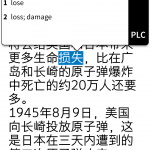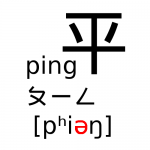Articles in the ‘Intermediate’ category Page 26
-
Zooming in: The tools you need to break down and understand Chinese
In order to learn efficiently, it’s important that you integrate your knowledge. This means being able to break down Chinese in order to understand it, but it also means looking at context and sorting out confusing cases. In this first article, I introduce tools for breaking Chinese down.
Read → -
Chinese learning tools and resources worth paying for
This article introduced the few tools and resources I think you should consider paying for when learning Chinese. The first list contains things you really should pay for, the second of things I recommend paying for, but which aren’t strictly necessary. Do you agree? Which things do you think worth paying for?
Read → -
Why you should read Chinese on your phone
Reading Chinese in this digital age is a lot easier than it used to, but it’s actually even easier than many students think. The benefits of reading on your phone are important, including instant access to vocabulary, smaller chunks of text, portability and a sense of getting somewhere when you read. If you haven’t read a Chinese text on your phone yet, you really should give it a try.
Read → -
Learning to pronounce Mandarin with Pinyin, Zhuyin and IPA: Part 2
Which transcription system should you use for Mandarin Chinese: Pinyin, Zhuyin or perhaps IPA? Which system you start out with isn’t extremely important, but if you care about pronunciation, it certainly helps to learn more than one system. In this article, I discuss the pros and cons of all three systems and offer some advice about learning pronunciation.
Read → -
Chinese listening practice with 锵锵三人行
锵锵三人行 is one of the few Chinese TV programs I actually like. It’s also one of the best ones for language learners too, mostly because of it’s heavy focus on talking, availability of transcripts and variety of both guests and topics. This should be a key component of any immersion effort, but you probably need to be upper intermediate or above to benefit.
Read → -
Learning to pronounce Mandarin with Pinyin, Zhuyin and IPA: Part 1
Learning to pronounce Mandarin involves several steps. You need to first discriminate between and then identify the sounds, but you also need to be able to write them down and also be able to read how words are pronounced. In this article, I discuss this process and how you should go about it. It also contains advice for what to avoid!
Read → -
Learning Chinese through audiobooks
Listening to audiobooks in a very good way to improve your listening ability beyond the basics. This article contains advice about how to choose a suitable novel, where to find it and how to listen to it.
Read → -
Bite-sized learning isn’t enough to learn Chinese
Bite-sized learning is great, but it’s not enough if you want to build real competence in Chinese listening and reading. To expose yourself to enough text and audio, you need long-form content that you can keep using even when you’re energy levels aren’t at 100%.
Read → -
Review: Mandarin Companion graded readers (Level 1)
Graded readers are an important step on your journey to becoming literate in Chinese. In this article, I review five books in the Mandarin Companion series, level 1, which uses only 300 unique characters. These books are useful for both beginners (extra reading) and intermediate learners (extensive reading).
Read → -
The best Twitter feeds for learning Chinese in 2015
Who should you follow on Twitter if you want to learn Chinese? There’s an increasing number of people who tweet excellent language content within the 140 character limit, often with pictures. This article contains a list of the 9 best ones, including a short intro and examples of what they tweet.
Read →









